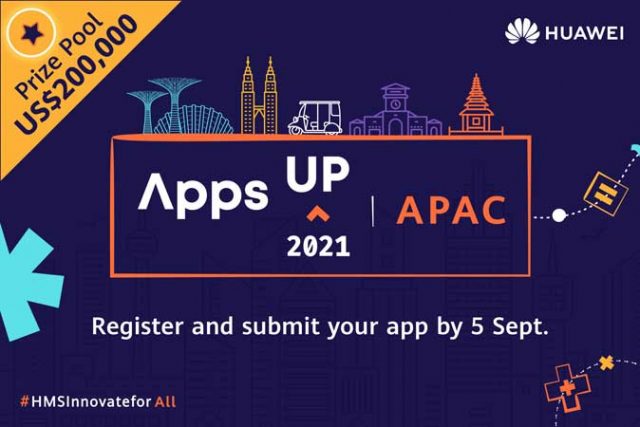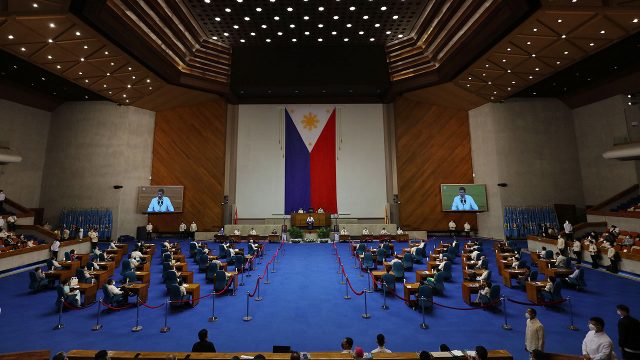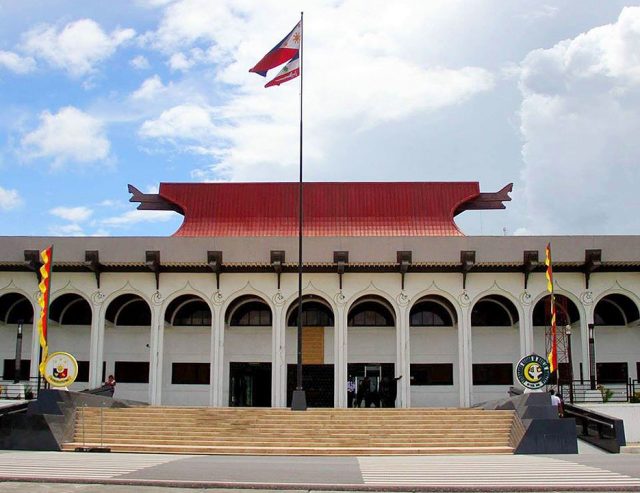Fintech expected to make services more accessible while pushing financial inclusion further
By Adrian Paul B. Conoza, Special Features Assistant Editor
As the coronavirus disease 2019 (COVID-19) pandemic further accelerated digitalization in various sectors, including banking and finance, financial technology (fintech) has been significantly shaping financial services in the new normal, as seen in the increased use of electronic wallets and online banking channels.
Beyond making transactions more convenient and efficient, fintech now plays a powerful role in realizing full financial inclusion in the country, as the panel in the final leg of a BusinessWorld Insights series themed “Meeting Transformed Consumer Needs through Fintech” recognized.
Lito Villanueva, chairman of FinTech Alliance Philippines, noted that the fintech industry has been facing and dealing with the challenge of getting more Filipinos banked, especially as the 2019 Financial Inclusion Survey of the Bangko Sentral ng Pilipinas (BSP) showed that the number of unbanked Filipino adults was estimated at 51.2 million, out of a total adult population of 72 million two years ago.
“[W]e have seen this as a welcome challenge for the fintech industry to address this, especially now that going digital became the lifeline of the ordinary Filipinos to survive during the pandemic,” Mr. Villanueva said during the forum last July 28.
Moreover, he noted that the central bank’s vision of a digitally and financially inclusive Philippines, enormous as it may seem, is nonetheless within the country’s reach, “especially with current fintech innovations and solutions being implemented nationwide.”
The BSP’s Digital Transformation Map 2020-2023 envisions expanding the financially included to 70% of Filipino adults.
The progress towards financial inclusion was shown by executives from other industry players in the panel.
Noting indications of continuing growth on its end, JF Darre, chief data officer and head of financial services of GCash, pointed out that over a third of its users have tapped on its financial services such as credit, savings, investment, and insurance that can be availed right from the GCash app.
He also noted the steady adoption of digital in terms of partnerships with local government units (LGUs), with over P16 billion worth of social amelioration disbursed to over two million Filipinos through partnerships with LGUs.
“Digital can be part of the solution. It’s a complementary kind of solution in helping [amid] the crisis,” Mr. Darre said, adding that GCash has always focused on making their products accessible and affordable.
Meanwhile, Mar Lazaro, managing director and head of enterprise business and sales at PayMaya, said that BSP, stakeholders, and partners are on track to achieving the financial inclusion target.
“Financial inclusion, for us, is not a competition,” he pointed out. “[It] is a national agenda.”
Mr. Lazaro noted that on PayMaya’s end users doubled in 18 months, with about 62% of new registrations accounted outside Metro Manila and growth coming from the Baby Boomer and Gen X demographics. He also noted that the e-wallet provider makes sure that no one gets left behind by this shift to digital as it serves consumers without a smartphone through PayMaya’s network of over 45,000 Smart Padala agent touchpoints.
As the financial inclusion push moves forward, Mr. Lazaro sees digital hubs within the communities to take a key role.
“Beyond remittance, community hubs such as sari-sari stores serve as bridges to the digital world. Soon, they will be digital agents for banks, e-commerce, and so on, and we’ll see that happening in the next coming months,” he said.
Technology enabling synergy
The panel agreed on the important role fintech plays, especially in terms of kickstarting synergy among industry players and other stakeholders.
“We recognize the importance of fintech in enriching our customer experience and promoting seamless, frictionless banking for all 24/7,” Mr. Villanueva of Fintech Alliance said, adding that technology is much needed to accommodate an increased demand driven by more people migrating to digital.
“Because of this, we believe that technology can help promote synergy amongst all players in the industry,” he pointed out.
Such synergy was evidenced among insurers, whose representatives in the panel shared their recent initiatives in making their products more accessible through fintech partners and other channels.
Zayd Tolentino, chief technology officer of Singlife Philippines, shared that technology helps address the gap between the insured and the uninsured, who are “composed of mainly middle-income families in search of protection products that fit their financial needs and can be easily adjusted when their needs change.”
Yet, Mr. Tolentino added, insurance technology (insurtech) cannot exist without fintech. “You need both technologies working together to disrupt the life insurance industry and deliver protection products that are truly digital.”
Rogie Niño, assistant vice president and head of business project management office at Insular Life (InLife), considers insurtech as an extension of fintech, particularly an application that heavily touches consumer convenience and experience from the creation and distribution of insurance products to the administration of the insurance business.
Mr. Niño further highlighted that InLife partnered with platforms such as Maria Health and Lazada to make their services more available to consumers. “There are upcoming fintech partnerships that InLife is currently working on — the likes of GLife, Kwik.insure, [and] City Savings, to name a few — which depicts that we’re an active player in this digital ecosystem,” he added.
Mr. Tolentino, on the other hand, pointed out its use of blockchain technology, Application Programming Interface-driven approach, and cloud to make life insurance “totally mobile-first”. He added that their firm built a plug-and-play solution that only needs to connect to the partner’s Know Your Customer (KYC) data and payment platform.
“This plug-and-play solution, or what we call our microservices portal, houses all our protection products and can be integrated into the front end of any digital platform,” he explained. “This cohabitation setup allows a seamless user flow between two platforms without having to switch screens.”
“For any incoming partner, we simply create a partner node and embed our portal within their app so they can offer our products to their customers,” he added.
Meaningful inclusion
Aside from showing how far stakeholders have reached towards financial inclusion, the forum further delved into what remains to be done to meet such goal.
Rex Gatchalian, mayor of Valenzuela City, pointed out the importance of building an enabling environment for fintech to thrive, which government — particularly LGUs — should initiate.
“Before we become inclusive, government and LGUs must be able to provide that platform,” he said, pointing out that this “multidimensional issue” can be addressed by ramping up the national ID system or PhilSys and building up the country’s digital infrastructure. The latter, he stressed, heavily depends on internet service providers (ISPs).
“ISPs really have to shape up…It’s more of a private sector initiative in fixing infrastructure,” Mr. Gatchalian said.
Kiranjit Singh, head of the Strategy3 division at market research firm Ipsos, said that financial inclusion must be meaningful.
“We should have meaningful financial inclusion [that goes] beyond just transactions [and enables] the ability of Filipinos to utilize certain several financial tools for their personal growth [and the] growth of their business,” he said.
Mr. Singh added that digital inclusion cannot be the only solution for financial conclusion in the Philippine context. “You still need to have the basic, traditional, physical means of getting more Filipinos to become more financially inclusive,” he said.
Also, Mr. Singh noted that “financial inclusiveness is one of the greatest enablers for a rising middle class”, and this fact should direct current and future policies that will enable fintech.
“Fintech is the actually best leveler in terms of getting more people to be financially inclusive,” he emphasized.
Financial literacy
The discussion also touched on the need to cultivate financial literacy among Filipinos.
Mr. Villanueva notes the finding in BSP’s 2019 survey that the reasons cited by 88% of mobile phone users who don’t use their phones to perform financial transactions were the lack of awareness, lack of trust, and lack of mobile signal, as well preference in physical transactions.
“To help improve this scenario, a responsive grassroots program on financial education and digital literacy must be launched,” he said, noting that the Rural Financial Inclusion and Literacy Bill and the Use of Digital Payments Bill, both pending in Congress, will deepen roots of financial education and inclusion if they push through.
Moreover, he recommends the integration of lessons on digital finance and fintech in the basic education curriculum; effective strategic communications through the use of alternative and digital media; and the maximization of social media reach and platforms to cultivate financial awareness and literacy and so shape the behavior of Filipinos towards a positive attitude with fintech and financial services
Mr. Singh of Ipsos, meanwhile, noted the need to educate consumers on the dos and don’ts of managing accounts and sharing sensitive data.
“Across Southeast Asia, we’re seeing right now the rise of scams or mule accounts. The new generation of financially inclusive [people must] know what they should and should not share with strangers,” he said.
This session of BusinessWorld Insights was presented by Tata Consultancy Services, GCash, and Singlife Philippines, with the support of Globe, InLife, and PayMaya.















